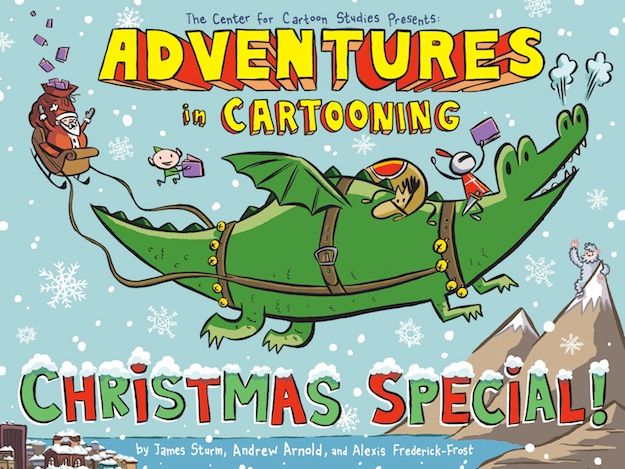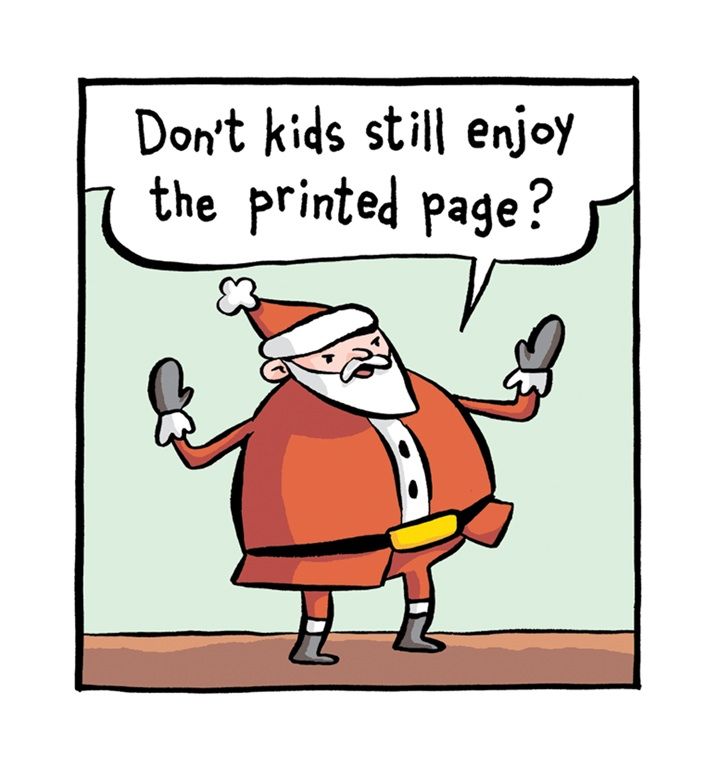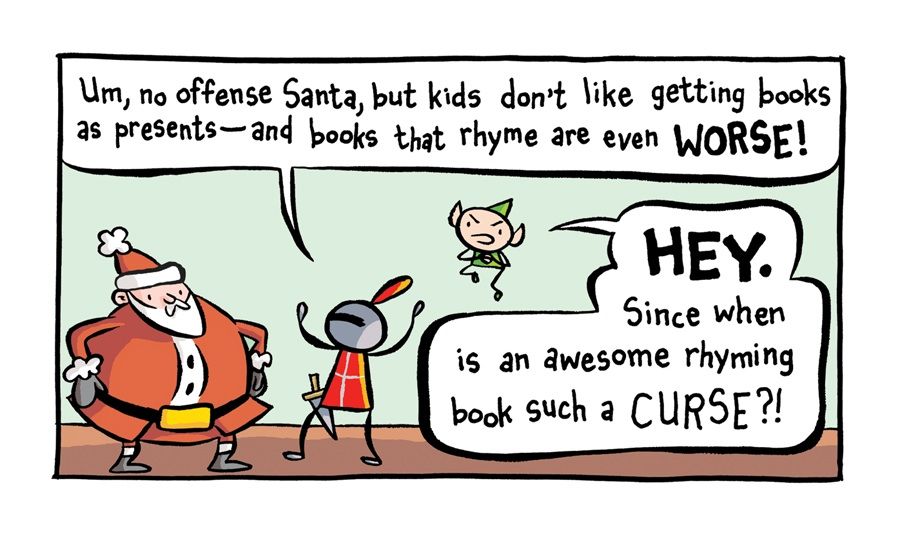James Sturm has had a rich and varied career, as the creator of critically acclaimed graphic novels such as Market Day, the writer of the Eisner Award-winning miniseries Fantastic Four: Unstable Molecules, and the head of the Center for Cartoon Studies in Vermont. A few years ago he embarked on something new: Adventures in Cartooning, a book that encourages children to draw their own comics. The book, co-created with Andrew Arnold and Alexis Frederick-Frost and published by First Second, was a big hit, as was its sequel, Adventures in Cartooning Activity Book. Now he's back, just in time for the holidays, with Adventures in Cartooning Christmas Special, which features a grouchy Santa, high-tech elves, and a yeti. I talked to James about the new book and why he enjoys creating comics for children.
Robot 6: Before these books came along, I was more familiar with your work for adults, such as Market Day. What do you like about making comics for children, and how does it challenge you?
James Sturm: As a parent, I’m constantly trying to figure out how to communicate with my own kids in ways that are age-appropriate and engaging without being patronizing. So for starters I’m much more aware of my audience. That said, I find writing for kids more liberating than confining. There’s a goofy and silly side to my writing that comes out that doesn’t for more mature audiences.
There are three co-authors for this book — how do you divide up the work?
Once we come up with the theme for a book, we’ll toss ideas back and forth. Once the dust settles on that process I’ll stitch all the ideas into a single narrative. Alexis is the brush behind the figures and Andrew letters and leads the charge with coloring (with all of us diving in at various spots along the way). The Xmas book is the exception, where that came out of me pretty close to the final book.
It seems like this is more of a storybook than the last two, which were more instructional and activity-oriented. Why did you change the focus?
I just followed my muse on this one. The book was written between Christmas and New Year's Day a few years back. The book’s focus isn’t all that different than the others in the sense it’s about inspiring kids to reach for a paper and pen and start cartooning.
Do you have the opportunity to work directly with children, and if so, how does that inform your work?
I have two daughters, and we all draw together often. They have seen every draft on each AIC book. Reading the book out loud to them over and over allows me to get a real feel for what’s working. Also, the Center for Cartoon Studies has been hosting a Saturday Morning Cartoon Club. The kids there just dive in, and I’m continually floored by their inventiveness and verve.
Your book starts off with a slightly curmudgeonly Santa complaining that kids these days only want video games and other electronic toys. You yourself went off the Internet for a couple of months. What's your beef with modern technology? Why do you feel that comics on paper are better than comics on screens?
The comics I really love are works that get richer each time I read them. I like sinking into a book and I find it easier to do so when it is its own discrete unit. I’m a distracted monkey and if what I am reading is connected to the Internet I will inevitability click onto something and start to wander.
In general I’d say we are a society that’s media-obese — consuming way too much of it. Adventures in Cartooning books are a call to action. I want to show kids how exciting the act of creating comics really is and to inspire them to become a media creators and not just consumers.
Let me flip this around: Would you ever consider doing a digital version of Adventures in Cartooning, or something similar?
Absolutely. But I would still prefer the kids read the book. I hear over and over from parents that after their kids read AIC they started cartooning and drawing for hours. Would this happen as readily if they were reading AIC on the screen or would they quickly be jumping onto the Animal Jam website?
I love the moment when the book turns meta, when the knight starts questioning why everyone is speaking in rhyme. What inspired you to include that moment in the book? I would imagine this will be the first time a lot of kids will see a character commenting on the book itself like that.
That moment was inspired by an exchange I had with my daughter. There’s a lot of my daughter in that knight!
Why a yeti? Where did that idea come from?
I think a better question is, Why not a yeti.
Do you plan on more books in the series? What's next?
We have another Adventures in Cartooning book coming next year called Characters in Action. All about designing characters and, as the title says, putting them in action!



